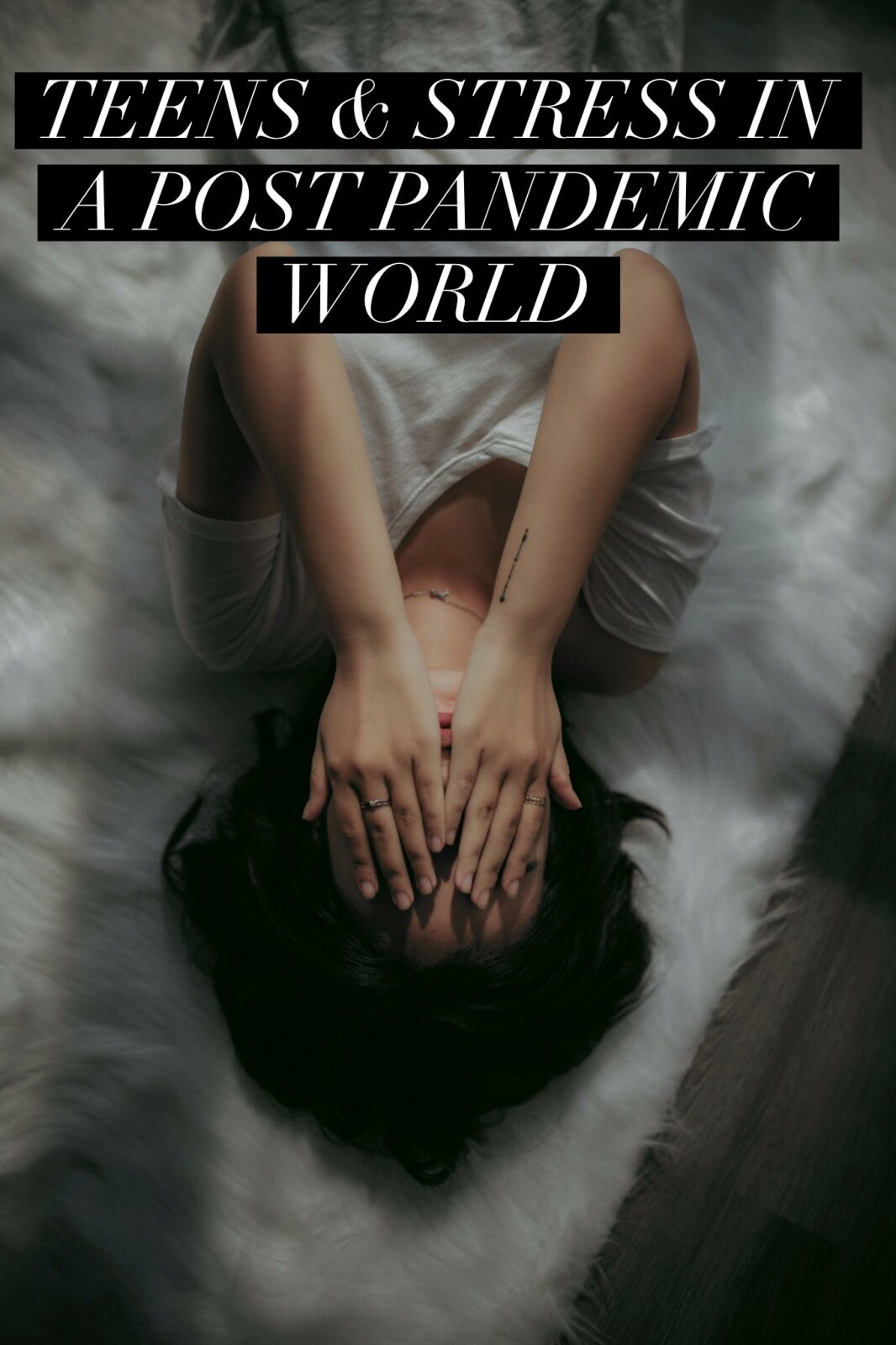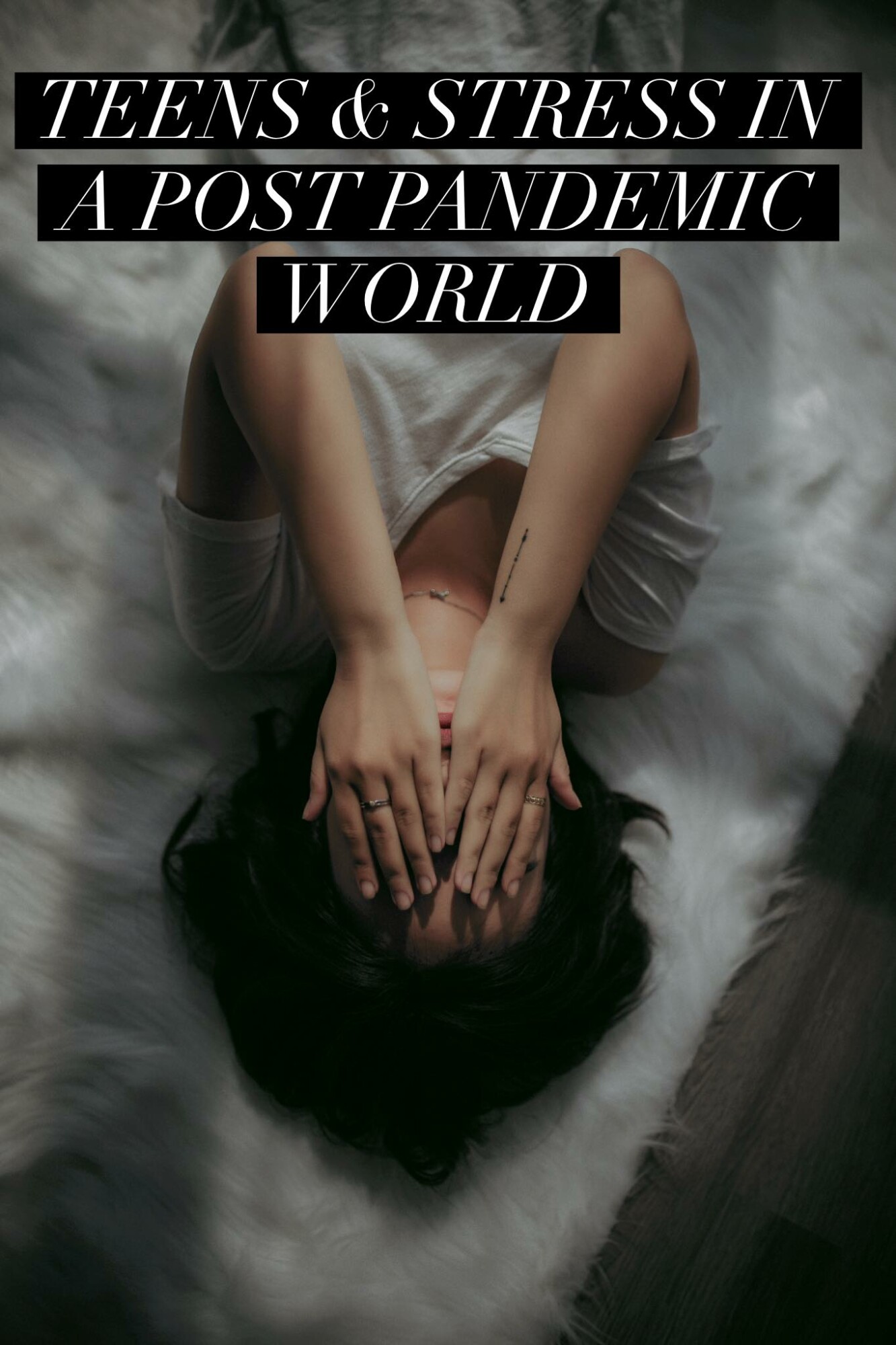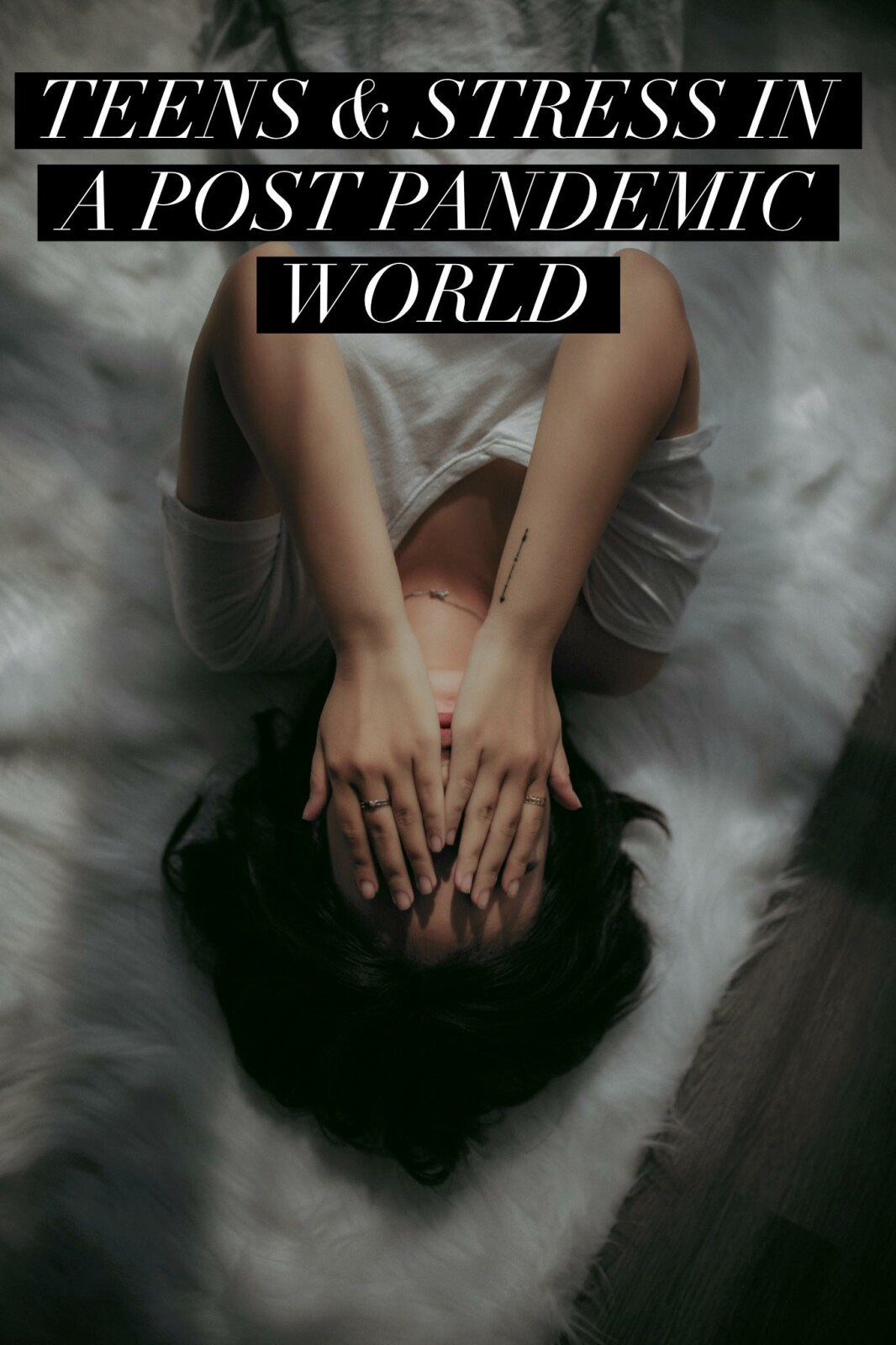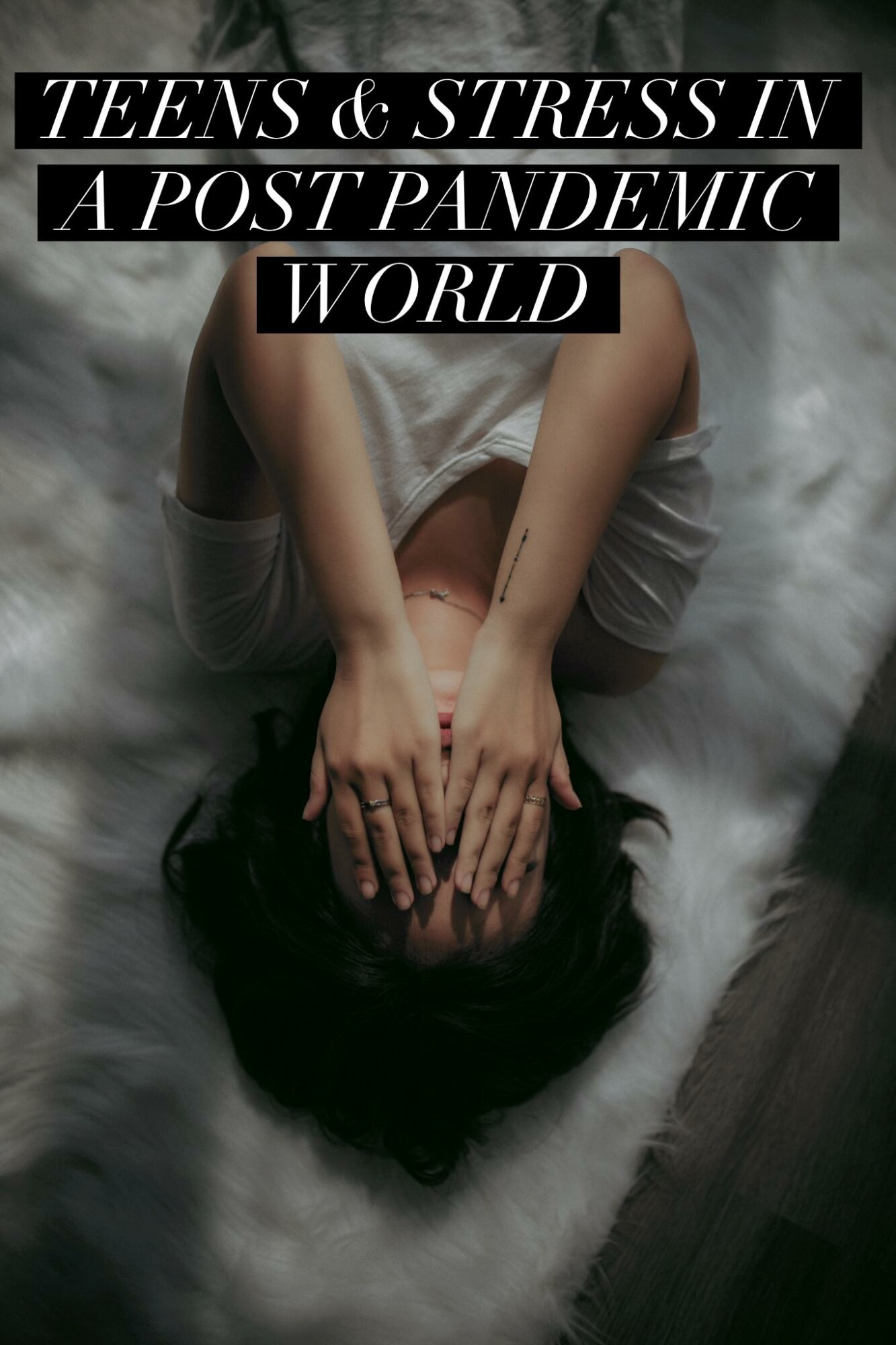
I think we all can agree that stress and anxiety is an epidemic. Seems like everyone we know is trying their best to manage it and to not "break". As you or your child are filled with more and more anxiety, it gets harder to focus on the positive things going on around them. You can't see the smiles on friends faces or the fact that your child just did well on a test. You may be irritated by the laughing of a peer group in the hallway at school, just positive that the group is somehow making fun of them. Anxiety and stress hormones make them prioritize the negative over the positive. They say their whole day was terrible, when really the only problem was that they dropped breakfast on the floor and the dog ate it.
They get stuck in a constant loop that can be very difficult to get out of, especially if they aren't wanting therapy and trying to do it themselves. We've talked about some ideas to try to help break the cycle and today we are going to talk about some natural supplements that might be able to offer some assistance as well. Because anxiety and stress is different for everyone and affects everyone differently, supplements that work for one person may not help someone else. Being open to trying different options is important in finding exactly what works for your child's particular situation.
Ashwagandha is Ayurvedic remedy that is often used for those who are dealing with anxiety and insomnia. "What is Ayuvedic?" you might be asking yourself. It's an alternative medicine system with historical roots in the Indian subcontinent. 80% of the population in India and Nepal use Ayurvedic as their primary health and medicine system.
Ashwagandha is an adaptogen meaning that it's a natural substances that helps the body and brain adapt to stress and help to normalize the stress processes of the body. Ashwagandha has been shown to calm the brain, reduce swelling, lower blood pressure and alter the immune system.
L-Theanine is an amino acid found in green and black tea. Studies show that it can improve mood and cognition as well as reduce stress and anxiety.
Most Americans are quite deficient in magnesium and while all need to be supplementing with it, those with anxiety can greatly benefit from it's daily usage. It has been shown to improve mood and decrease anxiety, enhance sleep, decrease muscle spasms and migraines. There are many different types of magnesium which all have different outcomes for the various ailments, magnesium lactate or oxide have been shown to have the best results.
VitaminD is another vitamin that most of us are deficient in due to the overuse of sunscreen, little things like CLOTHES, and changes in the sun and weather patterns. When VitaminD levels are deficient in our body, not only are we at greater risk for cold and flu and even cancer, but anxiety and depression also increase. There is varied research out there on how much we should be taking on a daily basis but the VitaminD Council recommends 5000iu for adults and teens. If I have someone with severe depression or severe anxiety, I tend to start them on a dosage of 10,000iu a day and go from there.
One of my favorite supplements is called Cortistop. According to the website, "when cortisol is produced too frequently, it can have negative health consequences such as feelings of fatigue, healthy weight and cardiovascular system health. Cortistop helps the body maintain it's natural balance & harmony & supports the glandular system with a combination of herbs and essential oils." It is listed as a female supplement, but rest assured that men can use it and can have amazing results as well. Remember, men has hormones and stress too.
Unwind is a simple supplement for kids and teens (and adults too) that reminds me of Pixy Stix. This simple little packet is convenient to keep in a backpack or purse. Your child or teen can just tear it open and dump it in their mouth. It contains the L-Theanine we discussed above, as well as magnesium (citrate) plus a whole marine magnesium complex. It also contains lavender and roman chamomile. This is also a great supplement for your littlest kids who might have a hard time "unwinding" at night to be able to get some sleep. It can promote a restful and relaxed state, help with sleeplessness and reduce occasional irritability and stress.
Mindwise is a combination of fruit juices & extracts, turmeric & premium essential oils. This combination works synergistically to create a powerful supplement for heart and brain function and health. With generous amount of VitaminD3, this supplement is equipped to support normal brain function and mood.
I hope that over the next couple of weeks, you are able to find some good support your child. The one thing I want to encourage you is to remember that this isn't going to change overnight. Many supplements will take 2-4 weeks to fully see the most results. If you happen to use one and have a negative response with your child, stop that one and move on to the next. I found that for my son, a product called Powergize, which he loves during football and while lifting weights becuase it helps boost stamina, supports healthy muscles and increases his muscle size, also increased his rage and anger while we were learning how to best manage his anxiety and stress. He would text me from school saying he was angry and that he was then made at himself for "being" angry because he didn't even know WHY he was so mad. When we stopped that supplement, the rage decreased and we were able to best find solutions to help with his daily stressors.
I hope that over the next couple of weeks, you are able to find some good support your child. The one thing I want to encourage you is to remember that this isn't going to change overnight. Many supplements will take 2-4 weeks to fully see the most results. If you happen to use one and have a negative response with your child, stop that one and move on to the next. I found that for my son, a product called Powergize, which he loves during football and while lifting weights becuase it helps boost stamina, supports healthy muscles and increases his muscle size, also increased his rage and anger while we were learning how to best manage his anxiety and stress. He would text me from school saying he was angry and that he was then made at himself for "being" angry because he didn't even know WHY he was so mad. When we stopped that supplement, the rage decreased and we were able to best find solutions to help with his daily stressors.
I have put together a simple list of many of the products we talked about in this blog for you to read more about and purchase simply to help your child (or yourself). If you need more help and more ideas, please feel free to message me or respond in the comments and I will help to tailor make a system for you and your child.
Best of luck to you and your child on this journey. Remember, YOU AREN'T ALONE!!!!
Dr Kelly.
In PART 1 we talked about how cortisol and stress levels are affecting our kids and teens. Today we are going to talk about some natural ways to possibly help to relieve some of the stress and lower their cortisol levels.
 With the lack of mental health care available, what are our options for potentially helping out teenagers deal with these challenges and decreasing their cortisol levels?
With the lack of mental health care available, what are our options for potentially helping out teenagers deal with these challenges and decreasing their cortisol levels?- Breathing exercise
Learning controlled breath. One of my favorites is the 4-4-4 method where your child inhales to a count of 4, holds the breath for 4, exhales to the count of 4. When this is performed with a bit of a visualization, it greatly increases the feeling of calmness. For me, when I first learned this, I invisioned almost like a circle. I would see the inhale of the circle and exhale of the circle during each breath.
- Guided meditation
This type of meditation is led by an instructor, whehther in person or via audio or video. During this guided method, the instructor will encourage you to release tension and stress from various part of the body, the face, the cheeks, the forehead, the shoulders, etc. Once the participant is a bit more comfortable and in a relaxed state, they will be guided through mental images, shapes, locations (a field of flowers, a winding stream). Deeper guided experience may focus on past traumas and watching as they disappear further and further away. These sessions maybe a few minutes long or may last for long periods of time. They may also involve soft recorded music or live ‘singing bowls’ to accommodate the experience. - Yoga
this part of yoga involves stillness and breathing. These poses calm the body and mind, helping stress to melt away while reconnecting your breath with your body. A recent study measured cortisol levels before and after a 50 minute yoga session and found that the levels were greatly reduced after. Some great poses for helping to lower stress and cortisol include: Easy pose, child’s pose, supported shoulder stand (lying on back with legs up the wall), Savasana (Corpse pose), tree pose and lotus. Just a few minutes of these poses can help to slow the mind and reset the body. - Sleep
Sleep is essential to helping the body to heal and a lack of sleep, overtime, is known to increase the cortisol levels in the body. Taking a nap in the afternoon, after a good night’s sleep, will also help to lower the cortisol levels in the body. One issue that happens is that cortisol uses the same receptors on the cells as melatonin, thus if you are going to bed with high cortisol levels, the melatonin has a difficult getting to the cell receptors and will make it tough to get to sleep or sleep deeply. We will talk tomorrow about ways to help reduce the cortisol so that the bodies natural melatonin can do it’s job. - Exercising
While exercise is important to the overall physical and mental health, it’s also one of those things that will be unique to the individual. High impact cardio has been actually shown to increase cortisol levels, at least temporarily, in many people as it’s the body’s way of coping with this added physical stressor. For some, walking or light job might be the best stress reliever and help with their cortisol while for others they may get the relief they are needing by increasing their endorphins while doing heavy weights and “pumping iron”. Regardless of what type of exercise your child’s body is needing, the one thing we know for sure is that it IS needing the exercise. - Balanced Diet
This always sounds like a broken record when reading through articles related to any sort of health issue. Increasing fruit and vegetable intake while cutting out processed foods and sugars will ALWAYS benefit the body, and that includes stress and hormone levels. Increasing VitaminB is a big factor in lowering cortisol levels and improving both anxiety and depression. Increasing protein as well as Omega 3 will also have a substantial effect on cortisol levels in most people. - Laughter
Laughter is the best medicine. We’ve all heard the quote but there is so much truth in it. It’s hard to feel stressed or overwhelmed when you are smiling and having a good time. While it can be difficult to put yourself out there and enjoy time with other people, having fun and laughing increases serotonin and lowers cortisol. It can help your improve your relationships and friendships, giving you more overall support. Find a hobby. Go to dinner with some friends. Watch a funny movie or TikTok videos. Laughter really IS good for the soul!
In Part 3 we are going to discuss supplements and natural remedies that can assist your child through this difficult time.

One thing people might not know is that while I'm a homesteader and that's what I plan on talking about A LOT of this blog, I'm a chiropractor by day. I take pride in helping people relieve their stress, find holistic solutions to their headaches or hormone issues and learn to thrive in their health and overall lives. I'm a researcher and "digger" by nature, and love digging into the current research and articles out there. I'm sure that throughout the pages of this blog I will have quite a few "sprinklings" of remedies, lifestyle choices, and health information that hopefully will benefit you just as much as articles on where you are going to plant a garden or what kind of chickens to get.

When the schools were shut down for CoVid, we were told "the kids are resilient. They'll be ok". I'm here to tell you they most definitely are NOT! I'm seeing a large amount of kids struggling right now, and I don’t have all that many teenage patients. The surprising thing is that it's not just the middle school girls like we are used to seeing. It's high school BOYS! I talked to a student yesterday who is quitting basketball this year. He loves basketball and when I asked him about the upcoming season, he told me wasn't playing this year. You could tell he didn't want to talk about it, but that he was struggling. During football season, 4 boys on the JV team quit....on the same day, 3 because of mental health related issues.
Boys are much more closed off so unless they are used to expressing emotions, they probably aren't talking about it. They look ok on the outside-smiling, joking around, having fun, being their normal selves. You as a parent may not ever see the turmoil because they aren't SHOWING you. They are fighting an internal battle, possibly taking it out on people at school or in their peer group, who take their behavior as them “joking” around. They sense they are acting different but they can’t pinpoint exactly why.
In the spring of 2020 a survey found close to a third of students felt unhappy and depressed much more than usual. In the past year, as we have returned to “normal life", the latest research shows that many students are still living in a state of mental health crisis. 44% of students stated that during the past year they felt hopeless or perpetually sad. 44%!!!! That is a HUGE number!!
Some of the reasoning’s could include having been closed off from their peers, the stress of going virtual and having to learn a whole new way of learning that they’ve never had to do before, the inability to see smiles or receive hugs and touch from people. Smiles, hugs and touch all release oxytocin as well as serotonin and dopamine. A lack of touch and interaction decreases these "feel good" hormones and increases stress hormones such as cortisol. Add in the various stressors during the past couple of years of loss of loved ones, online schooling, loss of family income, loss of sporting events, etc and this increased the cortisol even further. Research tells us that long term, elevated cortisol in kids and teens leads to an increase in anxiety. Early childhood and teen year experiences are fundamental in shaping both the development of the stress response and the responses from an individual to stress across their life. It should come as no surprise then, that the experiences of the last year have changed the way that these young minds respond to stress or any kind.
“A study by Hankin and colleagues (2010) found in a longitudinal study from preschool through adolescence that high-risk, dysphoric children showed hyporeactivity to a stressor in preschool and 3rd grade, but hyperreactivity to a stressor in 9th grade, illustrating a developmental shift in cortisol response for at-risk youth. In addition to activation during the stressor itself, a failure to downregulate HPA activity following stress termination has been identified as a marker of internalizing problems in adults”. (Taken from “Child Anxiety Symptoms Related to Longitudinal Cortisol Trajectories and Acute Stress Responses: Evidence of Developmental Stress Sensitization”. https://www.ncbi.nlm.nih.gov/pmc/articles/PMC4351756/)
I would argue that with the traumas and micro traumas that have occurred over the past 2 years, it’s not a matter of “at risk” or “dysphoric”. I would argue that right now, ALL our youth fall in the “at risk” category.
I would argue that with the traumas and micro traumas that have occurred over the past 2 years, it’s not a matter of “at risk” or “dysphoric”. I would argue that right now, ALL our youth fall in the “at risk” category.
So what does this mean when we say “hyporeactive” in younger kids and “hyperreactive” in teens? You may notice that in your younger child, they tend to shut down more in a stressful situation. They may withdraw into their computer game or TV show. They may not notice other people talking and talk over them. They may forget where they put things or look at something but still not be able to “find” it. A teen with hyperreactivity to stressors may exhibit what appear to be outbursts at seemingly nothing. They may react inappropriately to people joking with them or touching them, have a difficult time “letting things go”. They may not be able to focus in a class where there is a lot of noise or other stimulation. They may be defensive or combative to situations that normally they could tolerate. They may have avoidance issues, meaning they can’t stay in a classroom long and have to leave, or leave any situation that is causing them an uneasiness. They may avoid physical touch, despite having loved it before and may be easily angered or upset. Sound at all like things your kids are going through? YOU AREN’T ALONE! We are seeing this more and more in the students in our schools, at least in our local school where after the pandemic and all its traumas, we had another large tragedy in our district followed by a situation that left a “black eye” on our schools. Our students are feeling this and they are struggling because of it all!
The National Association of School Psychologists (NASP) recommends a ratio of 1 school psychologist per 500 students; but current NASP data estimates that in larger districts the ratio is 1 per 1,211 students. I say that with all that is going on, this 1:500 is NOT enough. I’ve heard from students that it’s often difficult to get in to the therapist or guidance counselors in their schools because there are so many other students needing the support as well. When we are in a crisis situation, as I would argue that our schools are in, we must treat it like the emergency situation we are in.
The National Association of School Psychologists (NASP) recommends a ratio of 1 school psychologist per 500 students; but current NASP data estimates that in larger districts the ratio is 1 per 1,211 students. I say that with all that is going on, this 1:500 is NOT enough. I’ve heard from students that it’s often difficult to get in to the therapist or guidance counselors in their schools because there are so many other students needing the support as well. When we are in a crisis situation, as I would argue that our schools are in, we must treat it like the emergency situation we are in.
So with the lack of mental health care available, what are our options for potentially helping out teenagers deal with these challenges and decreasing their cortisol levels?

